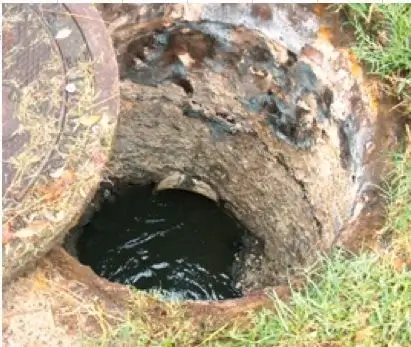Introduction
Welcome to our comprehensive guide on septic tank holes. In this article, we will explore the importance of proper septic tank maintenance, signs that indicate you might have a septic tank hole, how to locate and inspect your septic tank hole, common problems and solutions, tips for preventing issues, and expert advice. If you want to ensure the longevity and efficiency of your septic system, read on!
Understanding the Importance of Proper Septic Tank Maintenance
Proper septic tank maintenance is crucial for the overall health and functionality of your septic system. Neglecting regular maintenance can lead to various problems, including the formation of septic tank holes. By understanding the importance of proper maintenance, you can prevent costly repairs and ensure the longevity of your septic system.
Here are some key reasons why proper septic tank maintenance is essential:
- Prevents septic tank overflows: Regular maintenance, such as septic tank pumping, helps prevent septic tank overflows, which can lead to groundwater contamination and health hazards.
- Extends the life of your septic system: Regular maintenance keeps your septic system in good condition, increasing its lifespan and saving you money on premature replacements.
- Identifies potential issues early: By inspecting your septic tank regularly, you can identify any potential issues, such as septic tank holes, before they become major problems.
- Protects the environment: Properly maintained septic systems prevent harmful contaminants from seeping into the soil and nearby water sources, protecting the environment.
Signs that Indicate You Might Have A Septic Tank Hole
If you suspect a septic tank hole on your property, it’s essential to look out for specific signs that indicate its presence. Detecting a septic tank hole early can prevent further damage and minimize repair costs. Here are some common signs to watch out for:
- Unpleasant odors: Foul smells coming from your yard or near your septic system may indicate a septic tank hole.
- Soggy or greener grass: If the area around your septic tank or drain field is constantly wet or the grass appears significantly greener, it could be a sign of a septic tank hole.
- Sewage backups: If you experience frequent sewage backups or slow drains in your home, it could be a result of a septic tank hole causing blockages.
- Pooling water: Puddles of water forming near your septic system, especially after heavy rain, may indicate a septic tank hole.
- Sinkholes: The formation of sinkholes in your yard, particularly around your septic system, could be a sign of a septic tank hole.
Common Problems And Solutions For Septic Tank Holes
Septic tank holes can occur due to various issues. Understanding the common problems and their solutions can help you address them effectively:
Common Problem | Solution |
Corrosion and deterioration of the septic tank | Regularly inspect and maintain your septic tank, including pumping when necessary. Consider upgrading to a more durable tank material. |
Tree root intrusion | Regularly trim and remove trees or shrubs near your septic system. Install root barriers to prevent root intrusion. |
Overloading the septic system | Avoid excessive water usage and reduce the load on your septic system. Use water-efficient appliances and spread out laundry and dishwasher loads. |
Poor soil conditions | Implement soil remediation techniques, such as adding organic matter or installing a drainage system, to improve soil conditions and prevent septic tank holes. |
Tips For Preventing Septic Tank Hole Issues
Prevention is key when it comes to septic tank holes. Follow these tips to minimize the risk of septic tank hole issues:
- Regularly pump your septic tank to prevent excessive pressure and overflows.
- Avoid flushing non-biodegradable items or chemicals down the drain.
- Be mindful of water usage and conserve water whenever possible.
- Keep heavy vehicles and machinery away from the septic system to prevent damage.
- Plant trees and shrubs away from the septic system to prevent root intrusion.
- Have your septic system inspected by professionals regularly.
Frequently Asked Questions
Final Thoughts
When it comes to septic tank holes, it’s crucial to seek expert advice for proper maintenance and repairs. Consulting a professional septic system contractor can provide you with valuable insights and guidance tailored to your specific situation. Remember, regular maintenance and early detection are key to preventing septic tank holes and ensuring the longevity of your septic system. We hope this guide has helped uncover the secrets of septic tank holes and provided you with the knowledge to keep your septic system in optimal condition.
